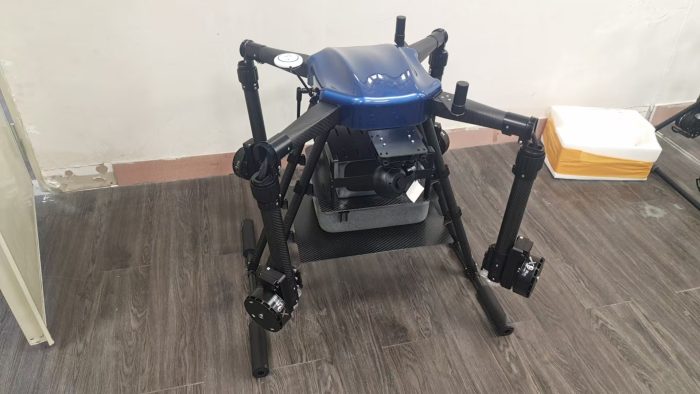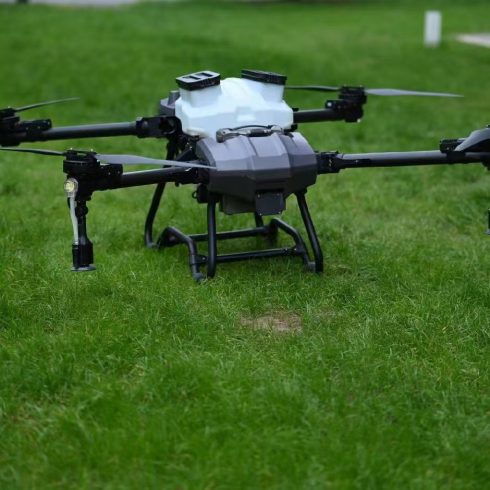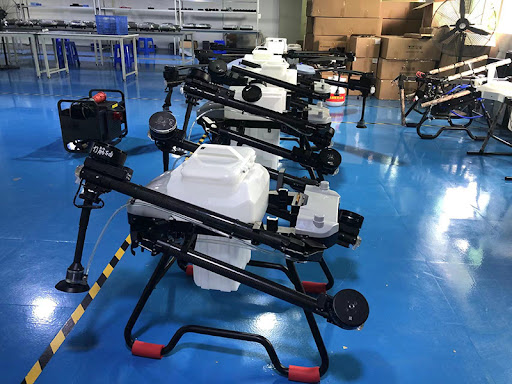![图片[1]-Emerging Trends in Pesticide Spraying Drone Technology-msoen](https://www.msoen.com/wp-content/uploads/2025/04/3ea0601715184639-1024x768.jpg)
![图片[2]-Emerging Trends in Pesticide Spraying Drone Technology-msoen](https://www.msoen.com/wp-content/uploads/2025/04/edbbb52c8b184639-1024x576.jpg)
![图片[3]-Emerging Trends in Pesticide Spraying Drone Technology-msoen](https://www.msoen.com/wp-content/uploads/2025/04/5bb323e000184638-674x1024.jpg)
As global agriculture seeks to feed a growing population while reducing environmental impact, pesticide spraying drones have rapidly evolved from niche gadgets to essential tools on modern farms. This article dives into the latest innovations, best practices, and regulatory developments shaping the future of drone pesticide application.
- AI‑Driven Targeting and Variable‑Rate Application
Traditional drone sprayers follow fixed flight paths and spray rates, but cutting‑edge systems now leverage artificial intelligence (AI) and computer vision to:
Detect Pest Hotspots: Onboard cameras identify areas of pest infestation or disease, enabling drones to concentrate spray only where needed.
Adjust Spray Volume in Real Time: Variable‑rate nozzles modulate pesticide flow based on crop density, growth stage, and wind conditions.
Optimize Flight Paths: Machine‑learning algorithms analyze field topography and historical performance data to minimize overlaps and gaps.
SEO Keywords: AI pesticide drone, variable rate drone spraying, precision UAV agriculture
- Swarm Operations and Fleet Management
Large‑scale farms require more capacity than a single drone can provide. Emerging platforms allow multiple drones to operate as a coordinated “swarm,” delivering benefits such as:
Parallel Coverage: Several drones cover different field sections simultaneously, reducing total mission time.
Dynamic Task Allocation: A central controller assigns drones to specific zones based on battery life and payload capacity.
Fail‑Safe Redundancy: If one drone encounters a fault, others can automatically compensate, ensuring complete coverage.
SEO Keywords: drone swarm agriculture, fleet management UAV, multi‑drone spraying
- Enhanced Payloads and Extended Flight Time
Battery technology and lightweight materials continue to improve, enabling:
Higher Payload Capacities: Modern drones can carry 30 – 40 L of pesticide per flight, doubling coverage compared to earlier models.
Extended Endurance: Advances in lithium‑ion battery chemistry and hybrid power systems push flight times beyond 30 minutes.
Rapid Swapping Stations: Automated battery and tank exchange stations at field edges allow near‑continuous operation.
SEO Keywords: high‑capacity spraying drone, long‑endurance UAV, agricultural drone battery life
- Regulatory Landscape and Compliance
As drone use in agriculture expands, many countries are updating regulations:
Operator Certification: Pilots often require an agricultural UAV license, with training in aviation safety and pesticide handling.
No‑Fly Zones & Altitude Limits: Government bodies define restricted areas (e.g., near airports) and maximum spray altitudes.
Data Privacy & Geo‑Fencing: Some regions mandate geo‑fencing to prevent drones from flying over private property or sensitive sites.
Staying compliant not only avoids fines but also builds trust with neighboring landowners and local authorities.
SEO Keywords: drone pesticide regulations, UAV agricultural compliance, drone flight restrictions
- Environmental and Economic Benefits
Environmental Impact
Reduced Chemical Use: Precision targeting can cut pesticide volumes by 30 – 50 % compared to broadcast spraying.
Lower Drift & Runoff: Directed nozzles and stable flight profiles minimize off‑target drift, protecting waterways and non‑target species.
Economic ROI
Labor Savings: One operator can manage multiple drones, replacing crews of 5 – 10 sprayers.
Higher Yields: Early and accurate application of pesticides reduces crop loss, boosting net returns.
SEO Keywords: eco‑friendly drone spraying, cost‑saving agricultural UAV, sustainable pest control
- Best Practices for Successful Deployment
- Field Mapping & Pre‑Flight Surveys
Generate high‑resolution orthomosaic maps to identify obstacles, terrain changes, and crop stress zones. - Calibration & Maintenance
Regularly calibrate flow meters, check nozzle wear, and update firmware to ensure consistent spray patterns. - Weather Monitoring
Schedule flights in low‑wind, non‑rain conditions. Use integrated weather stations or mobile apps for real‑time updates. - Pilot Training & Safety Protocols
Implement standard operating procedures (SOPs) for emergency landings, chemical loading, and post‑flight inspections.
SEO Keywords: UAV spraying best practices, drone farm safety, precision ag flight planning
- Future Outlook
The convergence of Internet of Things (IoT) sensors, 5G connectivity, and edge computing promises:
Real‑Time Crop Health Monitoring: Drones will not only spray but also survey plant health metrics and feed data into farm management systems.
Autonomous Logistics: Self‑driving ground vehicles could automatically recharge and refill drones, creating a fully autonomous spraying loop.
Integration with Robotics: Drones may work alongside field robots for seeding, weeding, and harvesting, forming an end‑to‑end automated farm.












暂无评论内容